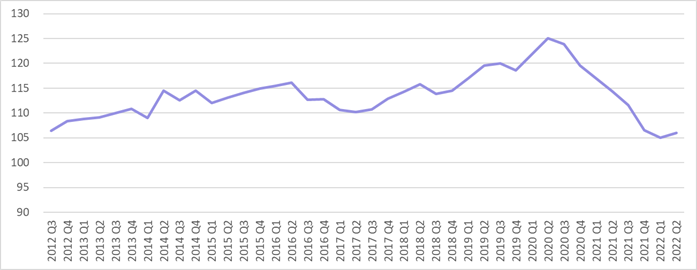The annual National Shelter-SGS Economics & Planning Rental Affordability Index reveals regional NSW housing is less affordable now than at any point in the last decade, challenging the perception that regional NSW is a safe haven for low- and middle-income households.
Rental Affordability Index, Regional NSW
John Engeler, CEO Shelter NSW, said: "For too long, the regions have been viewed with misty eyes as an affordable option for Sydneysiders to retreat to when rents got too high in the city. This is not the case, not for newcomers and certainly not for locals living on local industry wages. Since the pandemic, a growing proportion of renters are forced to dedicate more than 30% of their income to rent in the regions. This is not a sustainable situation, it's a social emergency."
Unaffordability is hurting the economy too. "Unaffordability has spread from employment centres. Households have to live further away from where the jobs are to access affordable rents, and businesses are struggling to find workers", according to Ellen Witte, Principal at SGS Economics & Planning.
The Report notes that the average rental household in regional NSW has a gross annual income of $84,651 per annum. If renting at the median rate, that household faces paying 29 percent of its total income to rent. This means regional NSW has a Rental Affordability Index score of 102, putting it right on the verge of being deemed 'unaffordable'.
This represents a 7 percent decline in affordability in the past three years, disproportionately hurting those on the lowest incomes pushed into housing stress to afford a roof over their heads. For a single person relying on JobSeeker, the average regional NSW rental is now 'extremely unaffordable', comprising 71% of income.
TR







